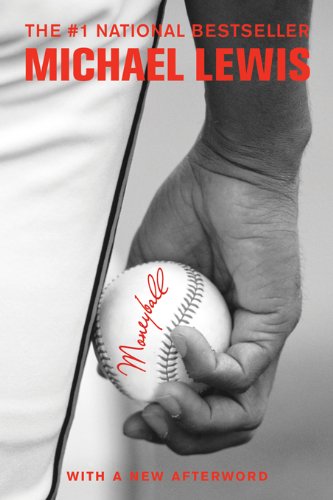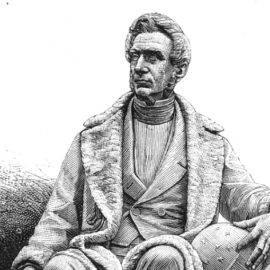

This article is an excerpt from the Shortform summary of "Moneyball" by Michael Lewis. Shortform has the world's best summaries of books you should be reading.
Like this article? Sign up for a free trial here .
What is the runs created formula? How does the runs created formula work?
The runs created formula is a mathematical equation developed to analyze the ability of a team to produce runs and wins. The formula’s creator, Bill James, argues that the most important measurement of predicting wins is not traditional statistics like batting average and RBI, but a new metric called the runs created formula, with a runs created calculator that helped them determine player value.
The Runs Created Formula
James wants to see exactly which plays most contribute to a team’s offensive production. He sets out to construct a model to predict how many runs a team might expect to score, based on their accumulated walks, singles, doubles, stolen bases, and other offense-generating plays. He pores over statistics from previous baseball seasons to see which components of offense are most correlated with runs. This allows him to assign a statistical “weight” to each, in effect determining how many runs (or portions of a run) a walk, hit, or stolen base is worth.
He distills it down to a Runs Created formula:
Runs Created = (Hits + Walks) x Total Bases/(At Bats + Walks)
After statistical analysis, James finds that this formula is remarkably effective in predicting a team’s run production. It shows that walks are a valuable (yet overlooked) part of offense, while batting average matters hardly at all. You can create your own runs created calculator based on this formula.
Removing Luck from Baseball Analysis
James begins publishing annual treatises, in which he highlights the uselessness of commonly-cited baseball statistics like errors, runs batted in (RBIs). Another of James’s key insights is that much of the data that managers, scouts, and GMs use to evaluate players’ skill is based on luck and subjective opinion. In publishing his annual baseball abstracts, James attempts to strip as much luck out of baseball analysis as possible, and develops the runs created formula.
James also points out the absurdity of that statistic revered by baseball’s old guard: the RBI. A batter earns an RBI when they score a hit that results in another player scoring a run. By definition, it is a product of luck: a batter has to have the good fortune to be at bat when other players are already on base. The batter will, of course, have had nothing to do with their teammates getting on base before them. It is a matter of luck to even have the opportunity to score an RBI. A batter who hits a single with a runner in scoring position and a batter who hits a single with no one on base have performed the same athletic feat—but one will be credited with an RBI, while the other won’t. James believes his runs created calculator can provide a better measurement.
Rejection by Baseball Insiders
Although James starts out with a small audience in 1977, his annual treatises on baseball, The Bill James Baseball Abstracts, reach a growing and influential audience throughout the 1980s. People are compelled by his sharp and pointed critiques of the ludicrous measures by which baseball teams measure success, and begin urging major league clubs to take James’s ideas more seriously. People with backgrounds in economics, mathematics, and statistical analysis are especially drawn to his rationalistic approach to analyzing something that everyone thinks they already understand.
Despite this, there is a marked hostility on the part of baseball insiders toward those they perceive as baseball outsiders, particularly this new army of data-focused, statistics-obsessed observers who dare to tell the big clubs that they are doing their jobs all wrong.
The small cadre of people who actually run professional baseball teams is determined to exclude outside voices and opinions, even if that means losing games. They prefer to do things their way than take advice from a bunch of pencil-pushers droning on about on-base percentage and runs created formulas. They are profoundly uninterested in using baseball statistics in an analytical way. In fact, in the early 1980s, the earliest participants in what later becomes the phenomenon of fantasy sports are more interested in getting their hands on good baseball data than the teams themselves—even though these fans stand to gain far less from such knowledge.
On the rare occasion when major league teams of this era do try to implement sabermetric principles in the front office, these attempts are met with hostility by baseball’s old guard, including sports journalists and ordinary fans. When the Boston Red Sox hire a James-inspired number-cruncher to advise the general manager on personnel decisions, the sports media in Boston treats the hiring as a scandal. They point to this person’s unathletic appearance, his non-baseball background, and his residence in New York City (home of the hated Yankees) as disqualifying factors. They excoriate the Boston GM for being under the sway of a computer geek who (to them) doesn’t know the first thing about baseball and claims to avoid even watching the games. After public outcry in Boston, the team is forced to fire this sabermetrician.
Exasperated James acolytes find their ideas rejected across the league. The ideological conservatism of baseball’s ruling elite seems to have a stranglehold on the game. Despite his growing popularity with the general public, James finds that he has made no headway with the most influential part of what he thinks would be his natural audience—the people who actually run professional baseball teams.
But he does have one devoted reader, who will eventually put his ideas into practice at baseball’s highest level—Billy Beane.
The runs created formula helped advocates of Sabermetrics weed out valuable players who offered win opportunities for a lower price than well-known all-stars.

———End of Preview———
Like what you just read? Read the rest of the world's best summary of Michael Lewis's "Moneyball" at Shortform .
Here's what you'll find in our full Moneyball summary :
- How Billy Beane first flamed out as a baseball player before becoming a general manager
- The unconventional methods the Athletics used to recruit undervalued players
- How Sabermetrics influences American baseball today





